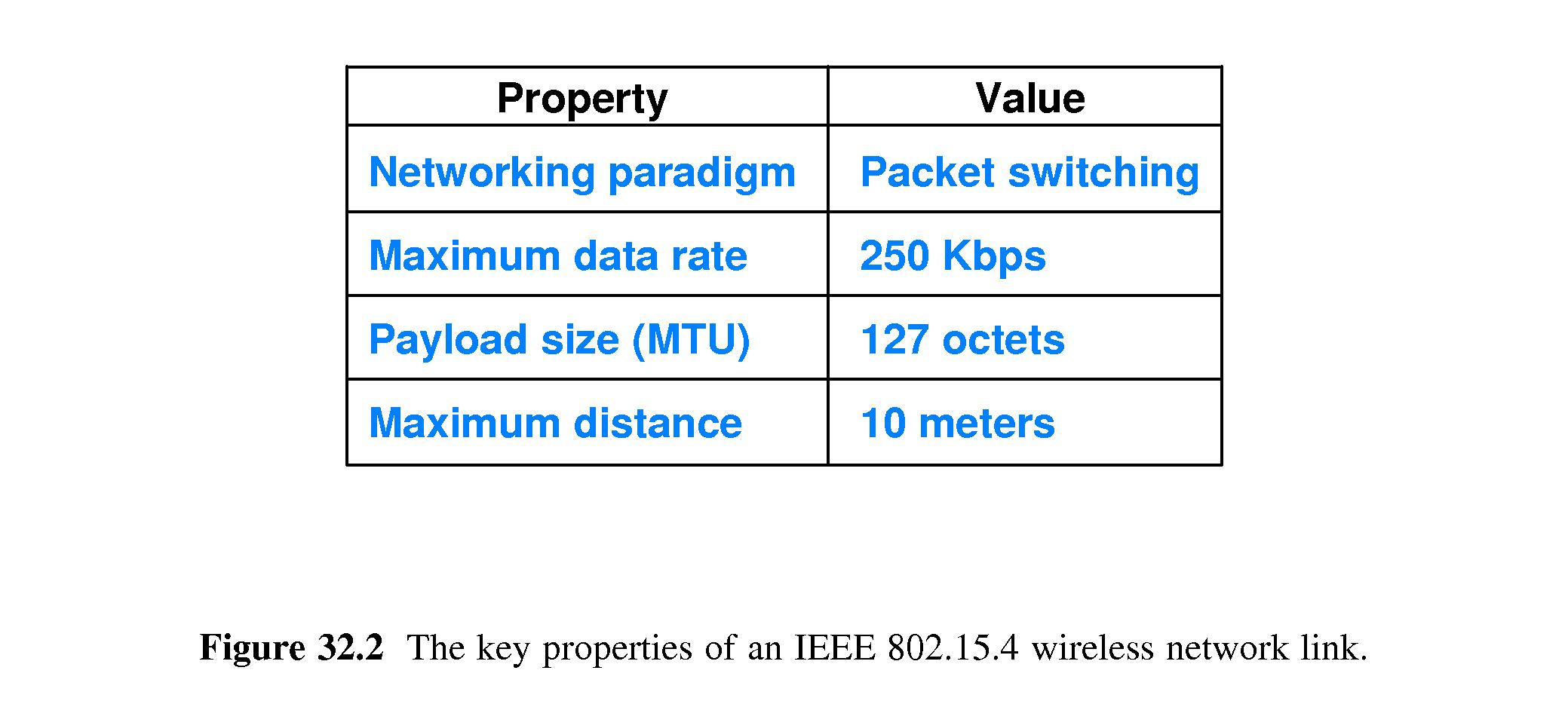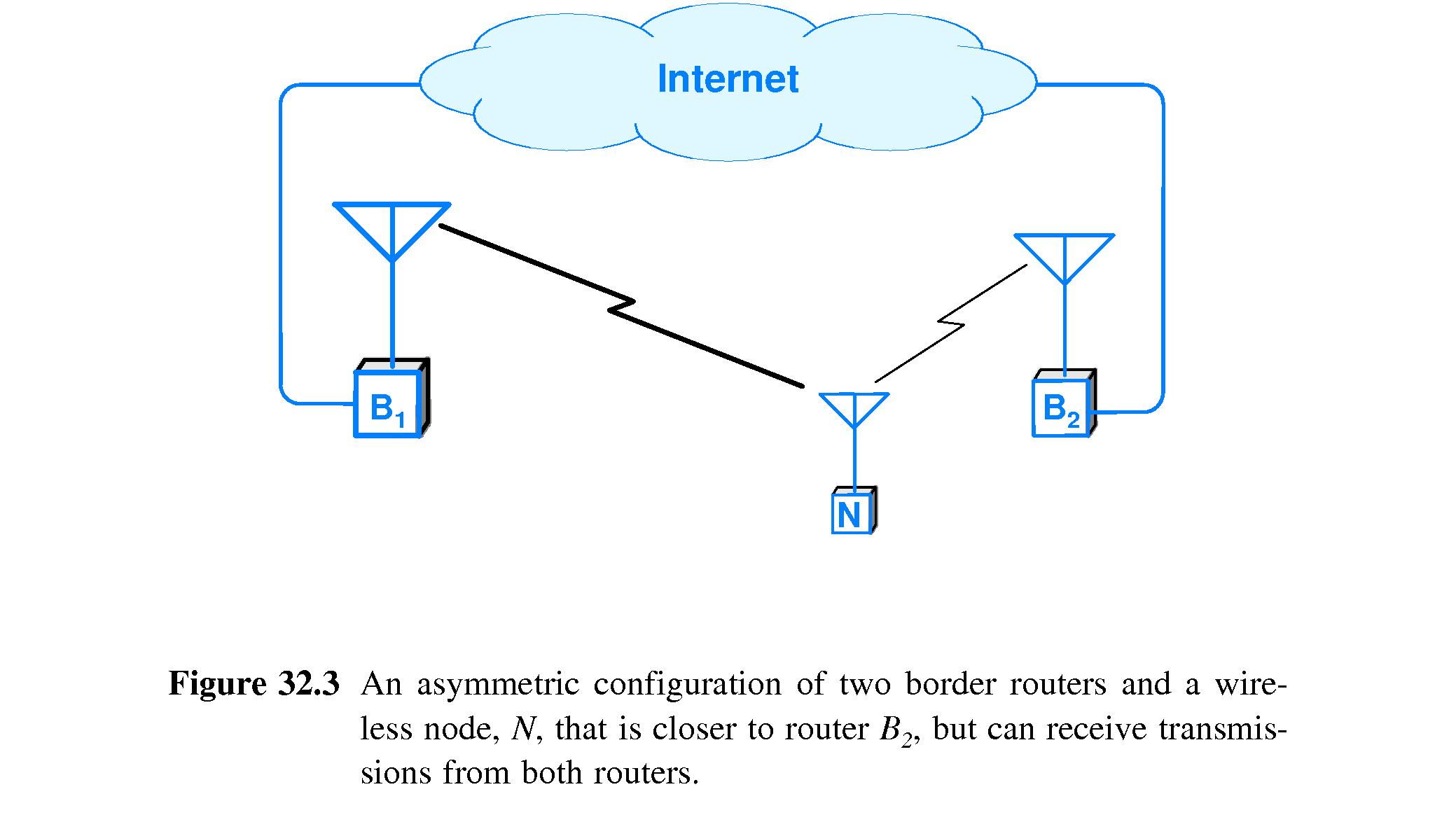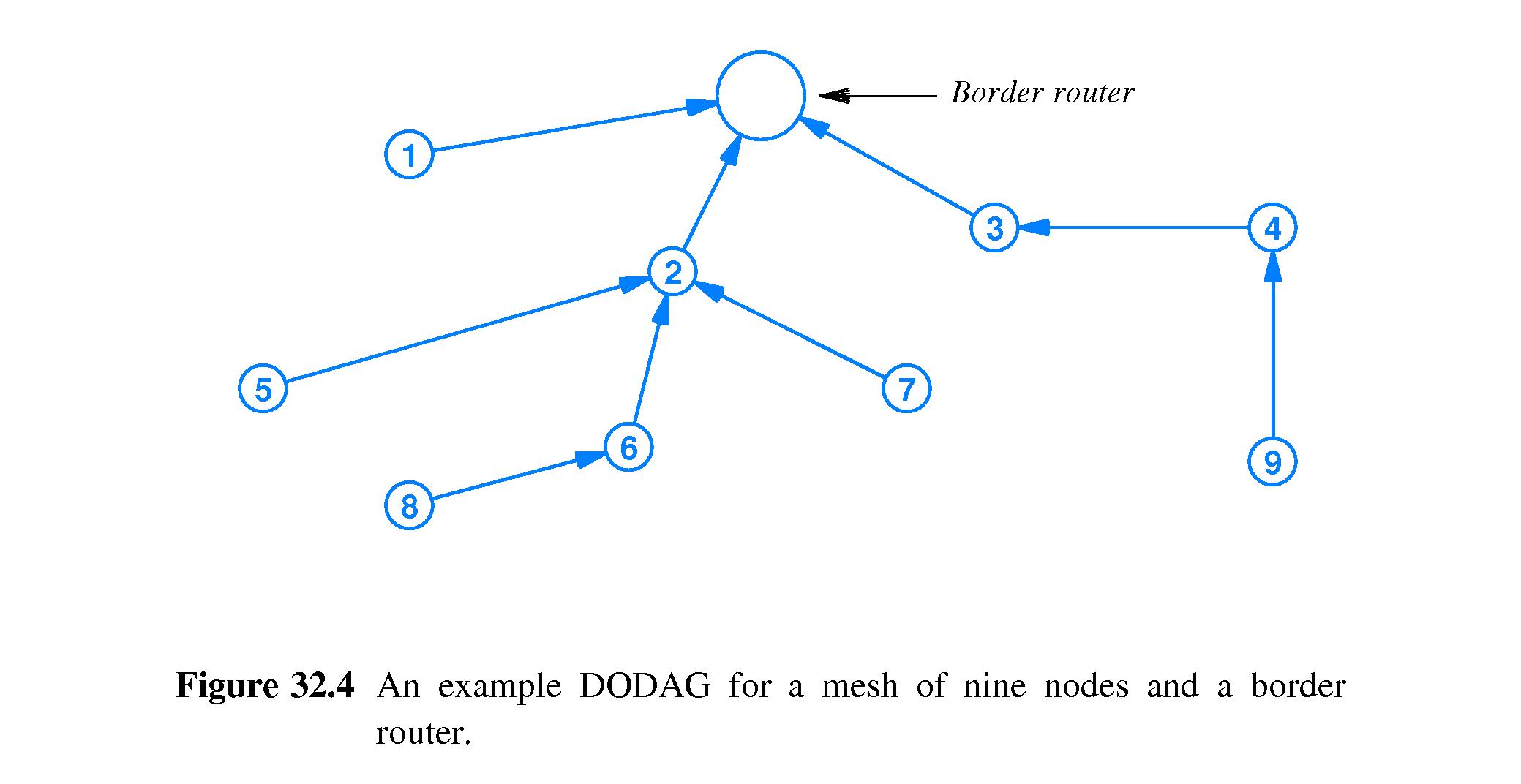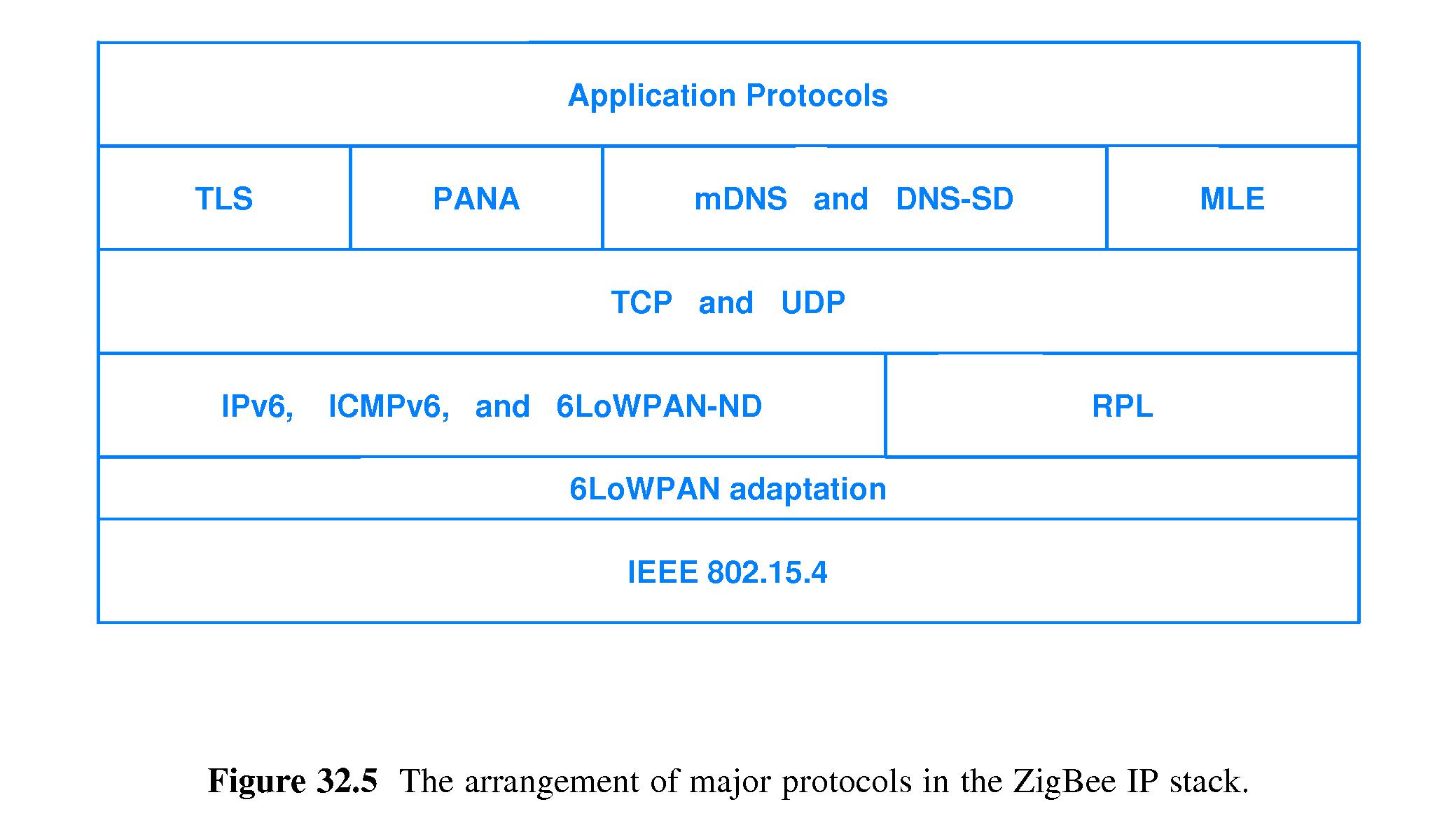(rev. July 7, 2015)
Notes On Chapter 32
-- The Internet Of Things
- 32.1 Introduction
- Internet of Things (IoT)
- Communication among machines
- Machine to machine (M2M)
- Motivation
- A wireless technology
- 32.2 Embedded Systems
- IoT refers to communication among computers
embedded in devices. Most computers are embedded systems.
- Using IoT, one may implement amenities such as home automation.
- 32.2.1 Embedded Systems In The Smart Grid
- Electric devices could schedule work based on knowledge
off the Internet regarding the cost of power at different
times.
- 32.2.2 Embedded Online Security Systems
- Security devices can be programmed to send a message when
something unusual happens, turn on lights, video, and so forth.
- There can be a sophisticated rule-based response to various
contingencies.
- 32.2.3 Embedded Systems In Retail
- Retail systems could recognize traits of people and
display targeted advertisements.
- Product placement decisions could be based on monitoring
the behavior of customers.
- 32.3 Choosing A Network Technology
- Issues include bandwidth, mobility, power consumption,
and battery life.
- No single network technology is best.
- 32.4 Energy Harvesting
- Battery replacement can be expensive.
- Extracting energy from the surrounding environment
is a possible alternative.
- It could involve using energy from repeated actions.
- 32.5 Low Power Wireless Communication
- WiFi design does not emphasize power conservation.
- Use of low power runs the risk of loss of range and
susceptibility to interference.
- Thus design of low power networks must be done with care.
- 32.6 Mesh Topology
- One way to make a low-power network is to use a mesh topology.
- To compensate for limited range, devices forward packets.

- Mesh networks self-organize using broadcasts to find neighbors,
and cooperating to discover routes.
- Orphans or islands could be problematic.
- 32.7 The ZigBee Alliance
- The ZigBee Alliance is a consortium of network equipment vendors.
- They maintain specs for low-cost, energy efficient mesh networks,
especially for smart grids.
- www.zigbee.org
- Where possible, ZigBee incorporates existing standards, which facilitates
interoperation with existing networks.
- 32.8 802.15.4 Radios And Wireless Mesh Networks
- The resulting network design has very small packet size, low data rate,
and short range.

- However, it conforms well to the key design criterion: low power,
and situations in which the amount of data to be transferred is small.
- 32.9 Internet Connectivity And Mesh Routing
- Embedded systems typically have very limited computational power
and storage.
- Nodes are designed to rely on cloud services accessed through a
border router connected to the Internet.
- It's important for nodes to have routes to the border router.
- Nodes use a breadth-first form of distance vector routing, starting
with the border router, to compute a best path to the border
router for each device.

- Measuring incoming signal strength does not tell the signal strength
in the opposite direction.
- ZigBee includes a Mesh Link Establishment (MLE) protocol that devices
use to determine how well their neighbors are able to receive
their transmissions.
("Do you read me? I read you five by five.")
- 32.10 IPv6 In A ZigBee Mesh Network
- ZigBee is 'based' on IPv6, but IPv6 requires an MTU of at least
1280 octets, while the MTU of ZigBee is 127 octets.
- The workaround is an extra layer of protocols between IPv6 and
the underlying MAC protocols - IPv6 over Low Power Wireless Personal
Area Networks (6LoWPAN)
- The adaptation layer aka shim layer accepts a datagram, divides
it into pieces, and sends them one at a time across a link.
- The protocol is not end-to-end, like fragmentation. The adaptation layer
at the next hop reassembles and passes the result to IPv6.
- There is a special version of IPv6 Neighbor Discovery for use with
ZigBee: 6LoWPAN-ND, which deals with the fact that a single broadcast
does not necessarily reach all nodes.
- Nodes register their addresses with the border router, which takes care
of rejecting duplicate addresses.
- 32.11 The ZigBee Forwarding Paradigm
- Nodes in a ZigBee use Routing Protocol For Low Power And Lossy Networks
(RPL).
- The assumptions underlying the use of RPL are that a) the topology of the
network will change infrequently, and b) nodes may not have enough memory to
store a complete routing table.
- RPL does not send frequent updates or converge on routes rapidly.
- Under RPL, nodes inform the border router about the mesh topology,
and the border router computes a tree of routes for all nodes.
(Destination Oriented Directed Acyclic Graph (DODAG))
- When it has a datagram from the Internet to forward into the mesh,
the border router computes a route and sends it along that route
using a source-route header on an encapsulating IPv6 datgram.

- 32.12 Other Protocols In The ZigBee Stack
- The figure shows other protocols.
- TLS and PANA are for security.
- mDNS and DNS-SD are for accessing DNS.

- 32.13 Summary




